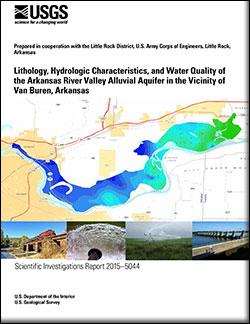Filters: Tags: {"scheme":"USGS Publications Warehouse"} (X) > Categories: Publication (X)
119 results (231ms)|
Filters
Date Range
Extensions Types
Contacts
Categories Tag Types Tags (with Scheme=USGS Publications Warehouse) |

Categories: Publication;
Types: Citation,
Map Service,
OGC WFS Layer,
OGC WMS Layer,
OGC WMS Service;
Tags: Scientific Investigations Report

Categories: Publication;
Types: Citation,
Map Service,
OGC WFS Layer,
OGC WMS Layer,
OGC WMS Service;
Tags: Scientific Investigations Report
The Beringian Coevolution Project (BCP), a field program underway in the high northern latitudes since 1999, has focused on building key scientific infrastructure for integrated specimen-based studies on mammals and their associated parasites. BCP has contributed new insights across temporal and spatial scales into how ancient climate and environmental change have shaped faunas, emphasizing processes of assembly, persistence, and diversification across the vast Beringian region. BCP collections also represent baseline records of biotic diversity from across the northern high latitudes at a time of accelerated environmental change. These specimens and associated data form an unmatched resource for identifying hidden...
Categories: Data,
Publication;
Types: Citation,
Downloadable,
Map Service,
OGC WFS Layer,
OGC WMS Layer,
Shapefile;
Tags: Arctic Science

Model-data fusion is a process in which field observations are used to constrain model parameters. How observations are used to constrain parameters has a direct impact on the carbon cycle dynamics simulated by ecosystem models. In this study, we present an evaluation of several options for the use of observations in modeling regional carbon dynamics and explore the implications of those options. We calibrated the Terrestrial Ecosystem Model on a hierarchy of three vegetation classification levels for the Alaskan boreal forest: species level, plant-functional-type level (PFT level), and biome level, and we examined the differences in simulated carbon dynamics. Species-specific field-based estimates were directly...

The mountains ringing the Gulf of Alaska (GOA) receive upwards of 4–8 m yr−1 of precipitation (Simpson et al.2005; Weingartner et al. 2005; O’Neel 2012), much of which runs off into productive coastal waters. The alpine landscape is heavily glacierized, and storage and turnover of water by glaciers substantially influences the regional surface water balance (Neal et al. 2010). In turn, the land-to-ocean flux of freshwater impacts the biogeochemistry, physical oceanography, freshwater and marine ecology of the downstream components of the GOA ecosystem (e.g., Royer et al. 2001; Hood and Scott 2008). In this way, the links between terrestrial and ocean ecosystems along the GOA have widespread impacts on regional socioeconomic...
|

|